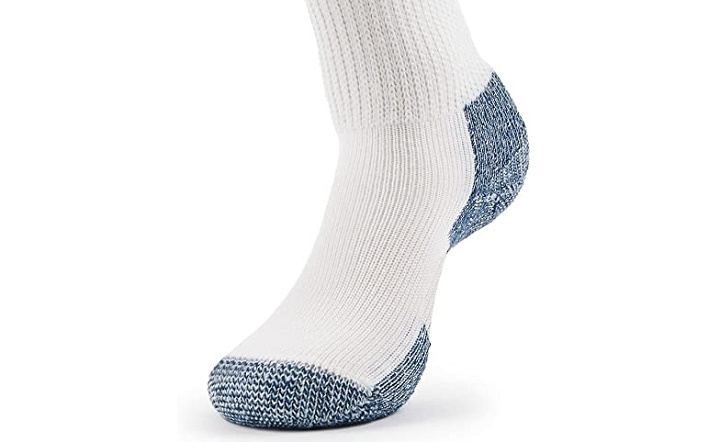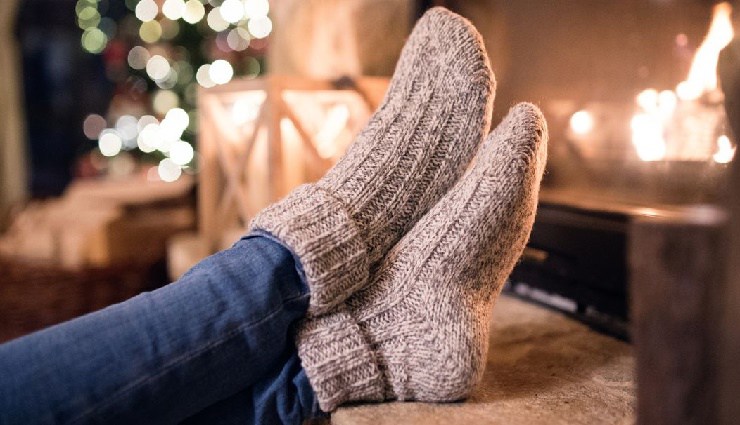Many of us spend a lot of time looking for the right shoes, but if we don’t use the right socks, the possibility of blisters, fungus, foul odor, and foot and toenail problems increases. Suppose you didn’t pay much attention to buying the right socks in the past and only cared about the color of the socks or their fit with your shoes and other clothes, maybe by reading this article. In that case, you will become more sensitive to this issue and realize the importance of using the right socks for the health of your feet.
Facts about feet
- The human foot has over 250,000 sweat glands that secrete 2 cups of sweat on a typical day.
- The human foot has 26 bones and 33 joints, a quarter of the total number of bones in the body.
- The human foot has more than 200,000 nerve endings. The density of nerve endings in the legs is higher than in other parts of the body.
Why do we need socks?
Sometimes we prefer shoes without socks, but I’m afraid that’s not right when planning activities such as walking, cycling, or climbing. Socks keep our feet dry, prevent blisters and make our feet more comfortable. Socks help keep feet cool in summer and keep feet away from foul odors, bacteria, and fungus.
You should consider the moisture-wicking feature when buying the right socks for activities. Fortunately, some fibers can repel sweat and absorb moisture from the skin. This feature prevents feet from blistering. Today, the best materials in terms of moisture repellency are merino wool, olefin, or polyester. Combining these materials may be expensive, but it provides comfort and better performance for sports fans.
Feet bear the weight of the whole body, and it is essential to regulate their temperature and keep them dry. In the production of socks, there are two main approaches to moisture control:
- Protecting the feet from high temperatures and thus reducing sweating;
- Inventing methods to transfer moisture from the feet.
Manufacturers try to create both of these features by combining different materials.
Characteristics of fibers used to produce socks
1. Bamboo fibers

Bamboo fibers are entirely natural and environmentally friendly. These fibers are very soft and breathable, prevent foot odor, and have antibacterial properties. Bamboo socks are a safe alternative for diabetic patients. Bamboo has the feature of temperature regulation and keeps the feet warm in winter and cool in summer.
2. cotton
Cotton is an entirely natural fiber obtained from the seed pods of the cotton plant. The cotton texture is soft and delicate, yet firm, and retains its shape even after repeated washings. Cotton is also breathable and biodegradable. Cotton is less prone to fading or wrinkling and maintains its color well. It is resistant to wear and has a good effect on the feet. Cotton can hold several times its weight in water and is stronger when wet.
Of course, the fact that cotton retains water after it gets wet makes it keep the moisture close to your skin. Therefore, during intense activities, your feet become hot and sensitive. Due to this issue, you should not use cotton socks when exercising because the friction and wear increase as the skin gets wet. If nylon or other non-absorbent fibers are combined with cotton, its ability to repel moisture increases.
3. Microfiber
Microfiber is a synthetic fiber widely used in the medical and sports industries. Microfiber is used chiefly for sportswear because it wicks moisture away from the body. Compared to other fibers, such as cotton, microfiber keeps the feet dry better, thus preventing the formation of blisters during sports activities. Microfiber is durable and allows manufacturers to produce thinner socks. Thinner socks take up less space inside the shoe. Microfiber is also stain resistant, making it easier to maintain and maintain its appearance over time. In the hosiery industry, microfiber is used to produce very soft products.
4. Poly amid
Polyamide is the most exciting fiber used for knitting socks. Nylon is also considered a polyamide fiber. Manufacturers can use these fibers to produce transparent, glassy, semi-thin, and thick products. These fibers can be paid to increase the resistance against the displacement of socks.
Nylon is a solid, versatile, and durable fiber that can be as thin as silk or thick. Nylon is usually used with other threads to increase their elasticity and durability. Almost all socks have some nylon used, either as a coating on the natural fibers or as a material to increase strength or elasticity. When nylon fibers are crimped and heat-stabilized, they become elastic and can be used to create elasticity in socks.
5. wool
Wool is an excellent natural fiber, sometimes woven with nylon on the outside to increase the fabric’s durability. Wool fiber has a constant color, is resistant to wrinkles, and has a lot of breathabilities. Also, wool is an excellent insulator that can absorb up to 30% of its weight in water without creating a feeling of being wet. Even when wet, wool retains its insulating properties. The wool insulation is because it has more volume and traps air, and keeps the feet warmer and drier.
When wool gets wet, it doesn’t irritate the skin (unlike cotton), but it doesn’t wick moisture well. Of course, knitting tiny knots inside the socks improve ventilation, impact, and moisture flow. Wool is an excellent option for cold weather because of its insulation, but it works best when combined with synthetic materials to better wick away moisture.
Do the right socks solve foot problems?
The answer is yes. There are hundreds of unique socks in the market; Socks for running, jumping, long walks, and sports. Today, with the information that doctors, especially podiatrists, give us, buying the right socks for foot health is much easier. Foot specialist doctors have suggestions and recommendations for various diseases and problems, such as diabetes, arthritis, plantar fasciitis, and Achilles tendonitis, which make the patient’s life easier and possibly prevent future problems.
Essential tips for buying socks
1. Synthetic fibers keep your feet cool and dry
A sock made of synthetic fibers keeps the feet cool and dry more than cotton socks. According to research, these fibers repel moisture better, keeping feet cool and dry. Acrylic, CoolMax, and Teflon are some types of synthetic fibers.
2. Using a cushion reduces the pain of the heel and chest of the foot and prevents the formation of blisters
According to research, thicker socks with special cushioning are more effective in reducing pressure on the chest and heel and preventing blisters. So if you have pain in the heel or instep of your feet or are prone to blisters, choose socks with extra thick cushioning. Note that extra padding increases the volume of the hose. So be sure to wear these socks when trying on shoes for purchase. If you’re wearing regular, thin socks when you try them on, you’ll probably feel very uncomfortable wearing cushioned socks.

3. Using cotton socks is not always good
If you have problems such as foot pain, blisters, sweaty feet, hot feet, toenail diseases, or foot fungus, do not use cotton socks because when cotton gets wet, it retains moisture, collects, and may cause a blister.
4. If you have diabetes, use unique socks for diabetic patients
The essential features of these socks are smooth and soft seams in the toes, moisture repellency, anti-fungal and antibacterial properties, fit the shape of the feet, comfort, and white color. These socks put slight pressure on the feet and have no seams in the toes that can irritate the sensitive skin of people with diabetes.
5. It is necessary to clean the appropriate socks during sports activities
In addition to preventing problems such as blisters and foot fungus, sports socks make the feet comfortable by keeping them dry and providing proper impact. Also, high-quality sports socks help regulate the temperature of the feet.
Did you know that sock size has nothing to do with shoe size? These numbers actually represent your leg length.
6. Eliminate the foul smell or excessive sweating of the feet by buying the right socks
If your feet sweat or have problems with their fragrance, use socks made with X-STATIC fibers. These fibers help kill the bacteria that cause foul foot odor. Socks produced with these fibers have many advantages compared to regular socks, including the following:
- X-STATIC fibers are the strongest anti-microbial and deodorizing systems. These socks eliminate common bacteria, fungi, and foot odor naturally and safely.
- X-STATIC silver fibers transfer heat well, keeping your feet relaxed in summer and warmer in winter.
- The presence of a cushion in the sole of the sock causes more impact and, as a result, reduces blisters, callus accumulation, and foot fatigue.
How to care for socks
It is better to turn the socks inside out before washing them. Please do not use bleach; soak them in cool or cold water on a delicate cycle (to prevent water loss). Hang them or lay them flat on the floor for extra durability. If you must use a dryer, use the dryer in a cold setting and avoid ironing the socks. When socks lose their elasticity, throw them away.
you say
Have you ever not paid much attention to using the right socks and considered it unimportant? In your opinion, what other points should we pay attention to buy the right socks? We would be happy to share your thoughts and experiences with us.
Warning! This article is only for educational purposes; to use it, it is necessary to consult a doctor or specialist.



